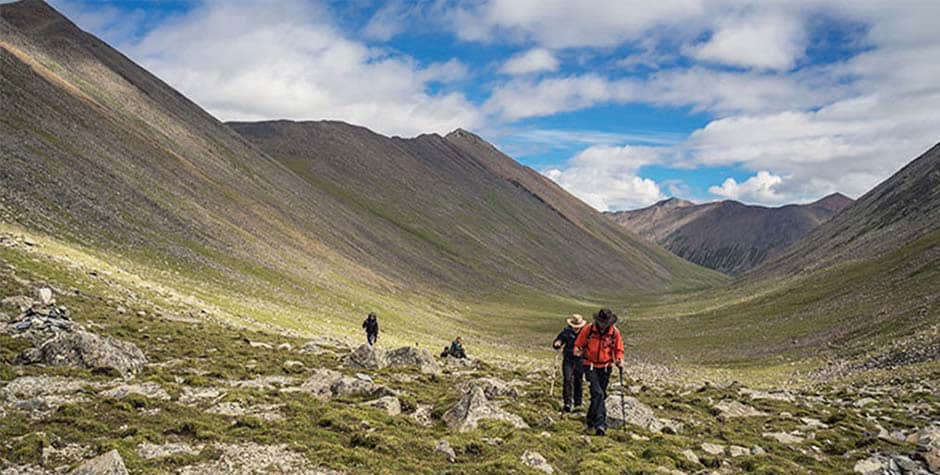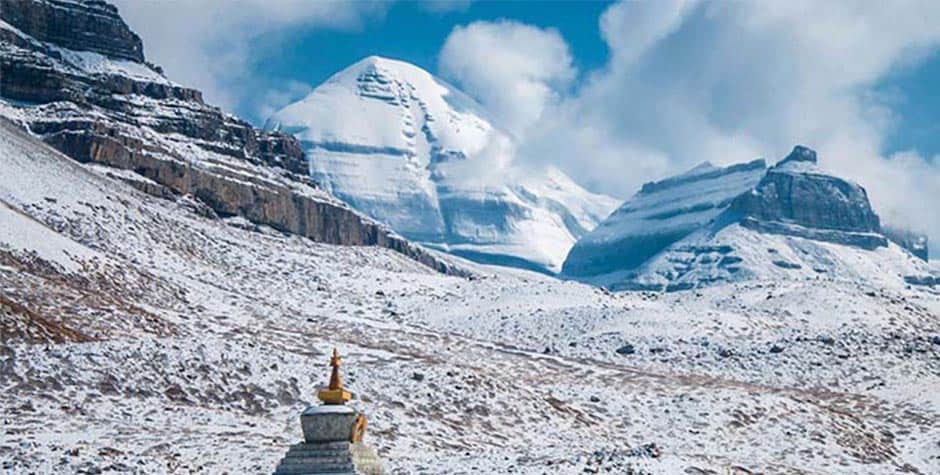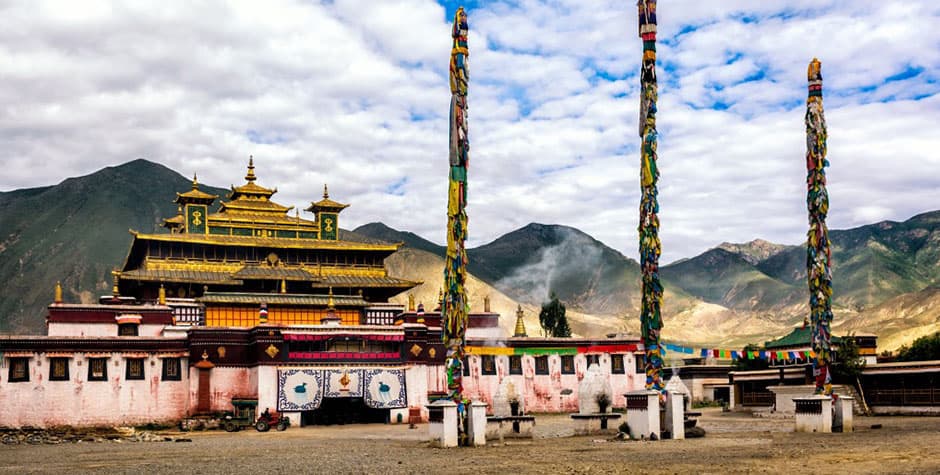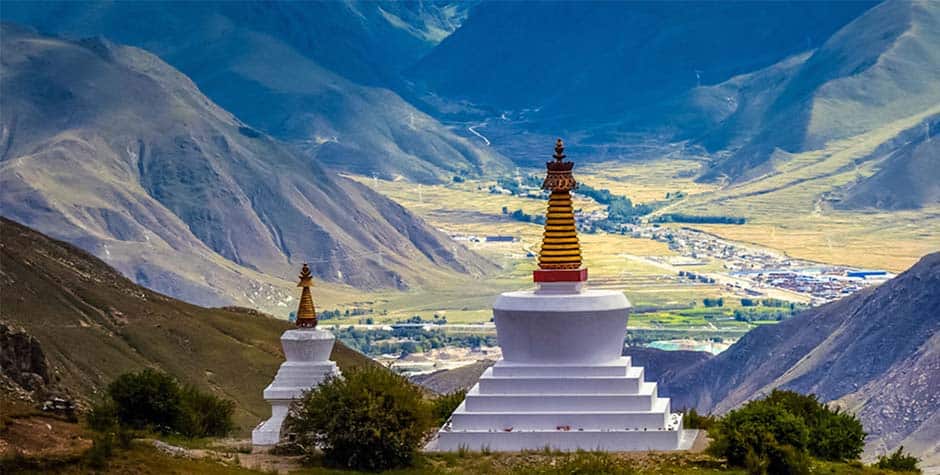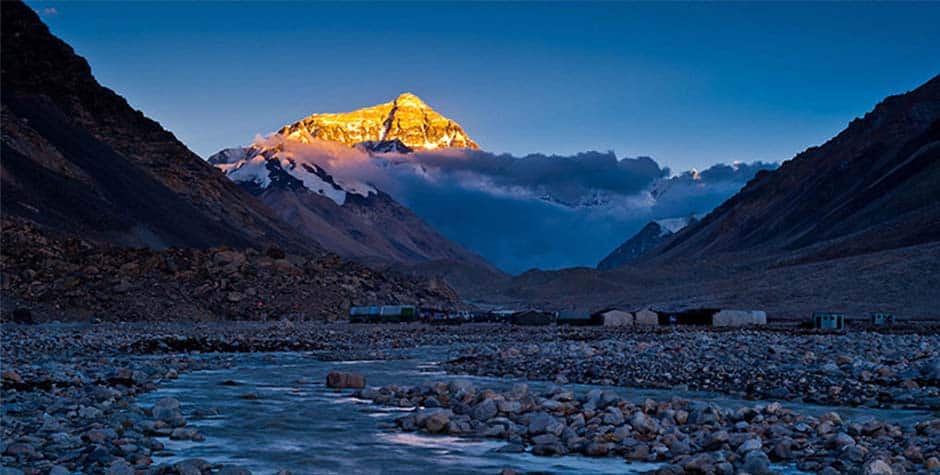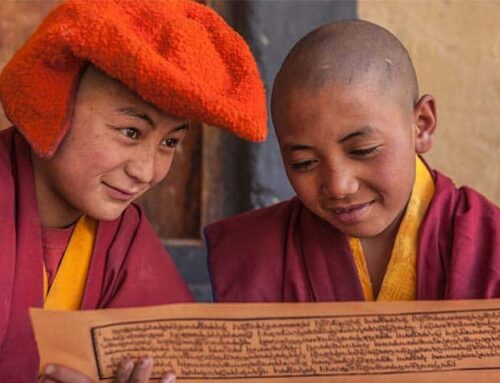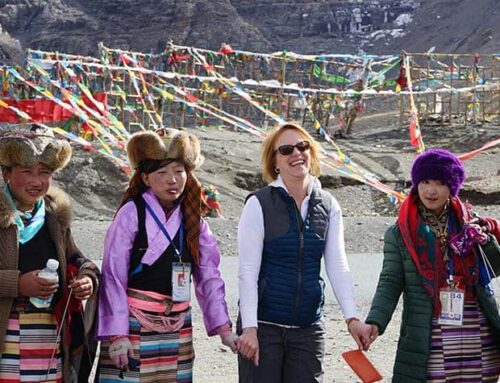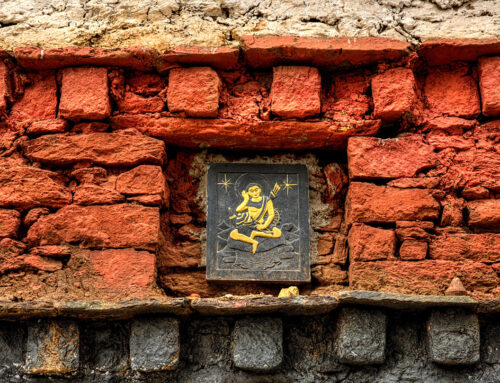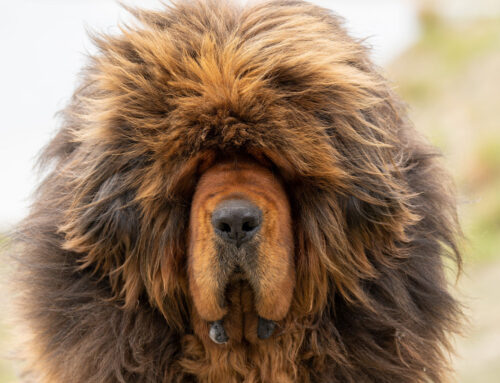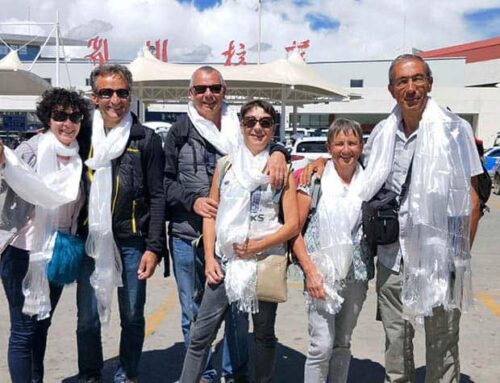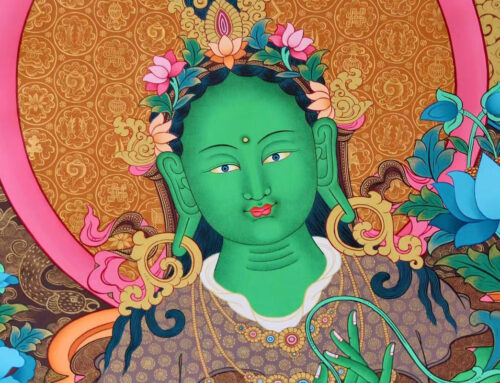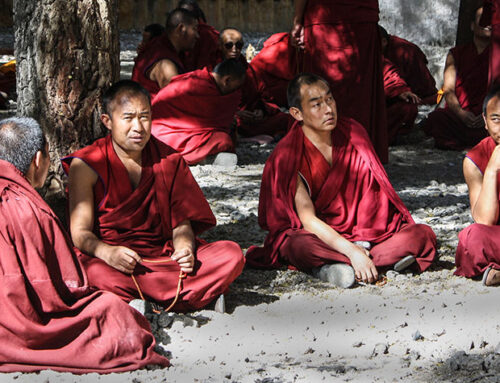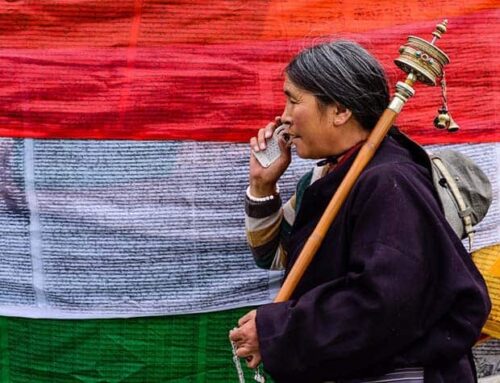The Tibetan art of statue making is another significant intangible cultural heritage of Tibet. During the Seventh Century, our Tibetan king, Songtsen Gampo, establish Buddhism in Tibet. He marrys Princess Wencheng from the Chinese Tang dynasty and Princess Bhrikuti from Nepal. Each brings with them the two holiest statues of Buddha.
Two Temples in Lhasa
In Lhasa, the first two temples were commission to house these statues. This elaborate project require skill masters of many different crafts. This is the first time in Tibet’s history that the construction of this magnitude has been done; artists were brought from Nepal and Tang to assist. This infusion of artisans laid a foundation for the Artistic tradition of Tibet and the Tibetan art of statue making, which would embellish and develop into a unique Tibetan style in the later generations.
The Tibetan art of statue making is one of the skills brought into Tibet during the construction of those Temples. Nowadays, we use two materials to make a statue: clay and metal.
Training for Artisan
Just like other sacred arts, statues are made according to the proportions of deities in scripture to be used as proper objects of meditation. The training of a statue-making artist to learn the Tibetan art of statue-making is much longer than that of a thangka artist because a statue-maker must learn the proportions of deities in two dimensions and master the new proportions of depth.
Sheets of copper are hammer into the shapes of the different parts. Then, the statue is assemble. To make more prominent statues, the copper sheets are work from both sides to create exquisite detail such as facial features and folds in clothing, allowing the artist to fashion completely lifelike forms.
Sand Casting
The sand casting process is used to create smaller statues. First, a clay model of the figure is create to cast. This model’s mould is then made using a mixture of sand and hay. It is then fill with molten copper and allow to dry. The clay model can be used multiple times, yet a new mould must be create for each new statue.
After completion, the statue is either gilde or polish to shine. Gold leaf is mix with mercury in the gliding process and then melted to form a paste. This paste is silver-colour and apply to the statue in an even coat. Lastly, the mercury is burn off with flame, and only the gold remains. Many coatings must be use to get a better finish.
Cold gold paint is use for the faces. It has a matte look and reflects light differently than gilding, similar to skin. Once the statue is finish, it is transfer to the Thangka painter, where the artist adds finishing touches to the face to give the figure personality.
Consecrates of Statues
A statue only comes to life after a high lama consecrates it through an appropriate ritual. In the ceremony, the figure is fill with offerings of relics, precious stones, incense, and rolled mantras, and then sealed.
The power of blessing increases in sculptures and other works of religious art as they age, accumulating the energy of the people who pray and use it to aid visualization during meditation. The artisans aim to create a statue worthy of carrying great blessings, treasured and passed down through generations of believers.
Conclusion of Tibetan Art of Statue Making
During your Tibet tour with us, you will visit a handicraft centre in Lhasa, where you will see the craftsmanship of statue-making. We can also help you find great places to buy authentic Tibetan statues while you travel in Tibet.
Read more about Tibet Travel Information and Tibet Tour Packages. Please visit our blog: Nomadictibet.com.
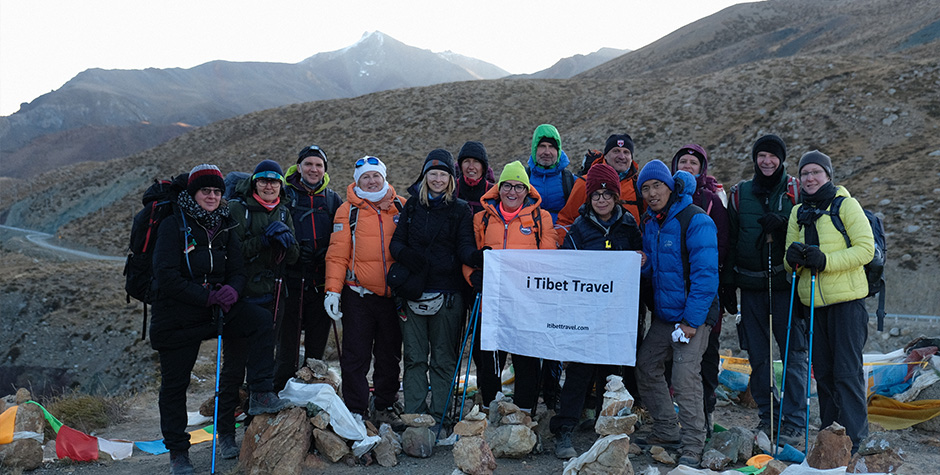
Tenzin Travel is one of Tibet’s most experience tour operators, with over 20 years in the industry. Found by a local Tibetan family with decades of expertise as guides, managers, and route planners, we craft personalized itineraries for every traveler.
Our Lhasa office is just steps from Barkhor Square, and our all-Tibetan team ensures deep cultural, linguistic, and religious insights, setting us apart from other agencies.
Beyond tourism, we support Tibetan communities by donating a portion of each tour to local projects. Your travel to Tibet is about more than profit—it’s about opportunity for us to give back.

